GP Midterms
PHYSICS: Classical Physics, Mechanics, Optics, Acoustics, Thermodynamics, Electromagnetism, Modern Physics, Quantum Physics, Nuclear Physics, Atomic Physics, Relativistic Physics.
MECHANICS: deals with the study of the relationships among force, matter, and motion.
KINEMATICS: enable us to describe motion, and develop sophisticated mental models that serve to describe the motion of real-world objects.
DYNAMICS: helps understand why objects move in different ways. Branch of mechanics that deals with the effect that forces have on the motion of objects.
MOTION IS RELATIVE
An object is moving if its position relative to a fixed point is changing. Even things that appear to be at rest move. When we describe the motion of one object with respect to another, we say that the object is moving relative to the other object.
DESCRIBING MOTION
To describe the motion of an object, the exact location of the object must be determined. A position refers to the location of an object with respect to a reference point or origin.
DISPLACEMENT VS DISTANCE
Displacement refers to the straight-line distance between an object's initial and final positions, with direction toward the final position.

Distance refers to the total length of path taken by an object in moving from its initial to final position.
NOTE THAT: the magnitude of displacement is not necessarily equal to distance. Distance is a scalar quantity because it is described by its magnitude only. Displacement is described by both magnitude and direction; it is therefore a vector quantity.
SPEED VS VELOCITY
Speed and velocity are used interchangeably in everyday situations.
Speed is the distance traveled by a body in a specified time interval.
Velocity, on the other hand, is the time rate of change of position.
Speed is scalar while velocity is a vector quantity. The SI unit for speed and velocity is meter per second (m/s). A moving body usually travels at changing speeds. Hence, there is a need to distinguish average speed and instantaneous speed.
AVERAGE SPEED VS. INSTANTANEOUS SPEED
Average speed is the total distance traveled divided by the total time elapsed. Instantaneous speed is the speed at a particular moment in time.

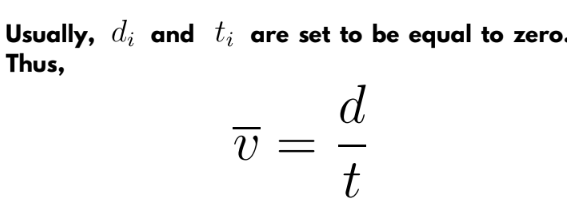
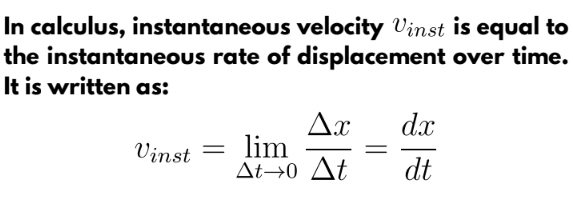
ACCELERATION
Acceleration is the rate of change in velocity. The simplest type of accelerated motion is a straight-line motion with constant acceleration. In this motion, the velocity changes by equal amounts in a specified time interval.
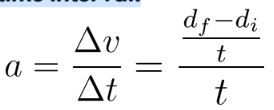
INSTANTANEOUS ACCELERATION
In calculus, the instantaneous acceleration is equal to the instantaneous rate of change of velocity with time. In symbols,

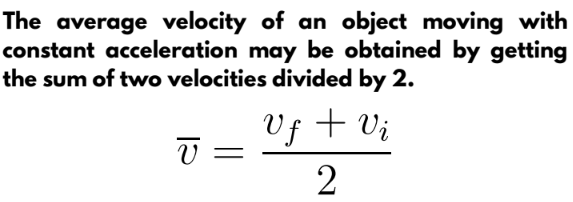
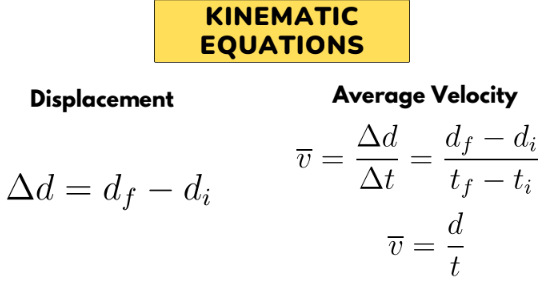
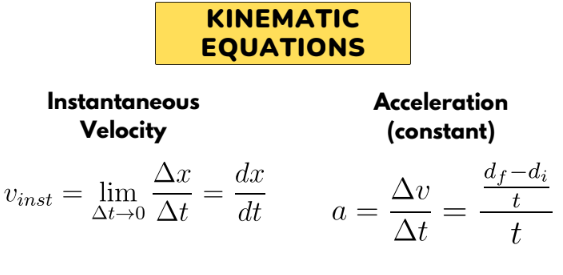
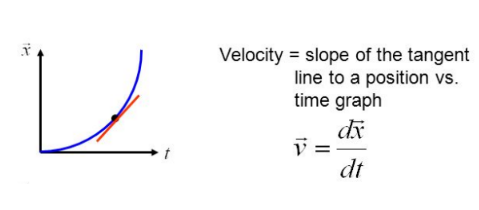
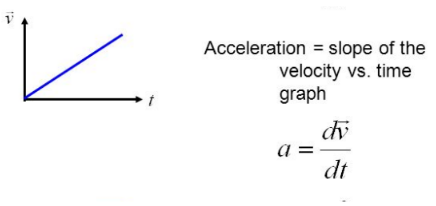
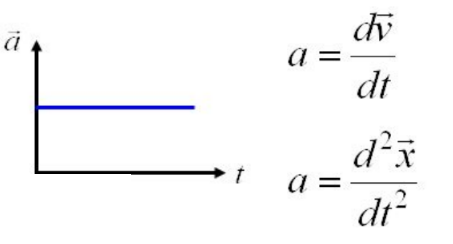
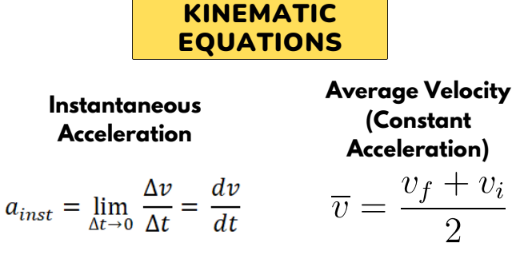
OTHER KINEMATIC EQUATIONS
You already learned about displacements, velocities and acceleration. you will use those basic equations to derive formulae used in Uniformly Accelerated Motion (UAM). Using the following equations on velocity, average velocity, and acceleration, you can derive other equations.
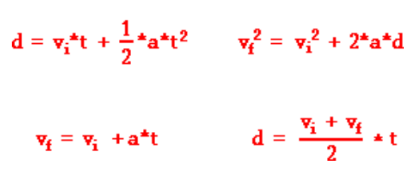
UNIFORMLY ACCELERATED MOTION
In Uniformly Accelerated Motion (UAM), the value of the acceleration is constant. It does not change. The velocity changes but at a constant rate. An object with zero acceleration is said to be in uniform motion. An object in uniformly accelerated motion has non-zero but constant acceleration. Acceleration represents how velocity changes with time, velocity represents how position changes with time.